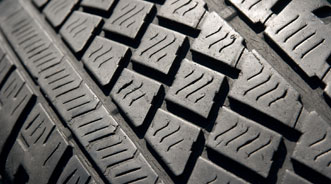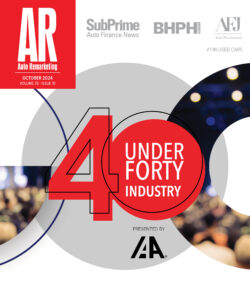J.D. Power Study Shows Consumer Satisfaction with Certain Tires on the Decline

As dealers highlight models to fulfill buyer demand for gas-sipping, high-performance vehicles, a new J.D. Power study showed satisfaction is declining among customers whose vehicles are equipped with a feature automakers are using to improve fuel efficiency.
Specifically, customer happiness with run-flat or low-rolling resistance tires is softening, according to the J.D. Power and Associates 2013 U.S. Original Equipment Tire Customer Satisfaction Study.
As automakers explore all options to meet the Corporate Average Fuel Economy standards, J.D. Power said they are increasingly looking at the effect of tires on fuel consumption.
Analysts explained two key tire-related actions automakers are taking to improve fuel efficiency are equipping vehicles with run-flat tires in lieu of a spare tire and using low-rolling resistance tires.
While potentially improving fuel efficiency, both products are falling short of customer expectations in terms of satisfaction with their tires, according to the study results.
J.D. Power noted run-flat tires are primarily being used on luxury and performance sports vehicles. In both instances, the firm found overall satisfaction with tires is lower when vehicles are equipped with run-flat tires, compared with when they are equipped with standard tires.
Overall satisfaction among owners of luxury vehicles with run-flat tires is 728 (on a 1,000-point scale), compared with 739 among those who own luxury vehicles with standard tires. The gap is even more pronounced among owners of performance sports vehicles, among whom overall satisfaction is 665 with run-flat tires versus 732 with standard tires.
Analysts contend that part of the gap in satisfaction is due to the necessity of having to replace run-flat tires more frequently, compared with standard tires.
The study determined nearly one-third (31 percent) of customers whose vehicle is equipped with run-flat tires have had to replace at least one tire, compared with just 19 percent of those whose vehicle is equipped with standard tires.
In addition, J.D. Power found customers with vehicles equipped with standard tires replace their tires after an average of 22,559 miles, more than 6,000 miles beyond the average life of run-flat tires.
“Automakers are trying to reach the next level of fuel economy, and are looking to their suppliers — in this case, tire manufacturers — to help them get there,” said Brent Gruber, director, global automotive division at J.D. Power.
“The challenge is doing this while finding tires that meet customers’ expectations. Run-flat tires are not currently meeting those expectations,” Gruber continued.
J.D. Power said customers with vehicles equipped with run-flat tires are nearly twice as likely as those with vehicles equipped with standard tires to have to replace a tire due to a flat or blowout. The firm also pointed out run-flat tires cannot be repaired and often need to be replaced in pairs rather than as a single tire.
“Owners of performance sports cars with run-flat tires say they ‘definitely will’ recommend their tire brand to friends and family only half as often as those whose car is equipped with standard tires (14 percent vs. 28 percent, respectively),” Gruber said. “That has a potentially tremendous financial impact on tire manufacturers.”
Consumer Insights and Social Media Research
The study also found that customers often express apprehension regarding low-rolling resistance tires.
Research conducted by J.D. Power's Consumer Insights and Strategy Group to track social media activity surrounding these tires determined that many consumers are concerned that equipping low-rolling resistance tires on their vehicle means compromising traction and durability in exchange for better gas mileage.
Additionally, the analysis showed these consumers perceive that automakers select the best type of tires for their vehicle and, thus, they are apprehensive about straying too far from the original selection. While consumers ultimately conclude that low-rolling resistance tires may improve fuel efficiency, Gruber noted they are confused and concerned regarding the associated sacrifices.
“While the marketing of low-rolling resistance tires has primarily focused on fuel efficiency, tire manufacturers may also benefit from advertisements that help educate consumers about the traction and dependability of the tires,” Gruber said.
“Consumers don’t fully understand the benefit of low-rolling resistant tires,” he went on to say. “They believe they are forfeiting important aspects of tire performance by opting for low-rolling resistant tires, yet don’t know how much improvement in fuel efficiency they should expect in return.”
Overall Satisfaction and Quality
J.D. Power recapped that its study measures tire owner satisfaction in four vehicle segments: luxury, passenger car, performance sport and truck/utility. Satisfaction is examined in four factors: tire wearability, tire appearance, tire traction/handling and tire ride. Rankings are based on owner experiences with their tires after two years of vehicle ownership.
Overall satisfaction with original equipment tires came in at 686, unchanged from 2012.
Analyts highlighted satisfaction increased in three of the factors, while tire ride satisfaction decreases by six index points year over year.
Overall satisfaction is highest in the luxury segment with an average score of 738, followed by the performance sports segment at 728 and the passenger car and truck/utility segments tied at 676.
For a fourth consecutive year, J.D. Power discovered customers are experiencing fewer problems with their tires.
On average, customers report 74 problems per 100 (PP100) vehicles, an improvement from 76 PP100 in 2012 and 84 PP100 in 2011. The most frequently reported problems are road hazard/punctures, slow leaks, excessive road noise and fast tread wear.
Overall satisfaction is 135 points lower among customers who experience a specific tire problem than among those who do not experience any problems (748 versus 613, respectively).
Highest-Ranked Tire Manufacturers
According to the study, Michelin ranked highest in three of the four segments: luxury (775); passenger car (729); and performance sport (751). Pirelli ranked highest in the truck/utility segment (737).
The 2013 U.S. Original Equipment Tire Customer Satisfaction Study is based on responses from more than 30,835 new-vehicle owners who purchased a 2011 or 2012 model-year vehicle. The study was fielded between October and December of last year.
Continue the conversation with Auto Remarketing on both LinkedIn and Twitter.

 View The Latest Edition
View The Latest Edition

